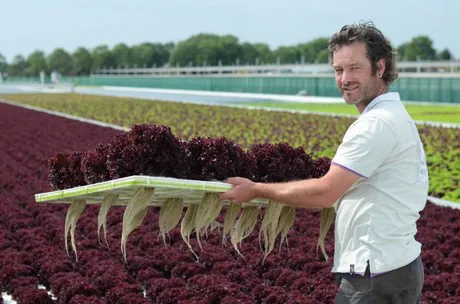
During cultivation, fertilizers selected for optimal growth of lettuce remain in the basin and the water is reused. This innovative production method saves fertilizers and reduces pollution of groundwater and/or surface water, making this method of cultivation not only sustainable, but it also provides a higher quality product.
Growth stagnation
In 2011 the first Dutch farmer used this innovative cropping system. Not all farmers have switched to this new method of production because it requires major investments and banks demand security. The first results of the project do look promising, but no guarantee can be given. Lettuce plants grow very well in water, but not immediately.
After the nursery the young plants are put in pots in a breeding pond. Then they enter into a growth stagnation for three or four days. This increases the production time and makes the plants vulnerable to diseases.
Solutions
Therefore it is important to take away this form of 'cold feet' of the young lettuce plants. Agrivizier helps entrepreneurs with innovations in agribusiness. Partners in this project include scientists of the university of Wageningen. They experimented with different solutions. Sprinkling during the first week only increased the probability of the presence of fungi.
Accustoming the lettuce plants to cold feet in a layer of water worked fine. The disadvantages are the additional costs and procedures. Currently, they are experimenting with the substrate in which the young lettuce plants grow.
Follow-up project
In October to April the cultivation of lettuce grinds to a halt. To allow the cultivation of lettuce throughout the year, there is talk of a new kind of greenhouse with heating and LED lighting. It is not just the question whether this is technically feasible, but if it is economically viable.
Source: Greenport NHN
